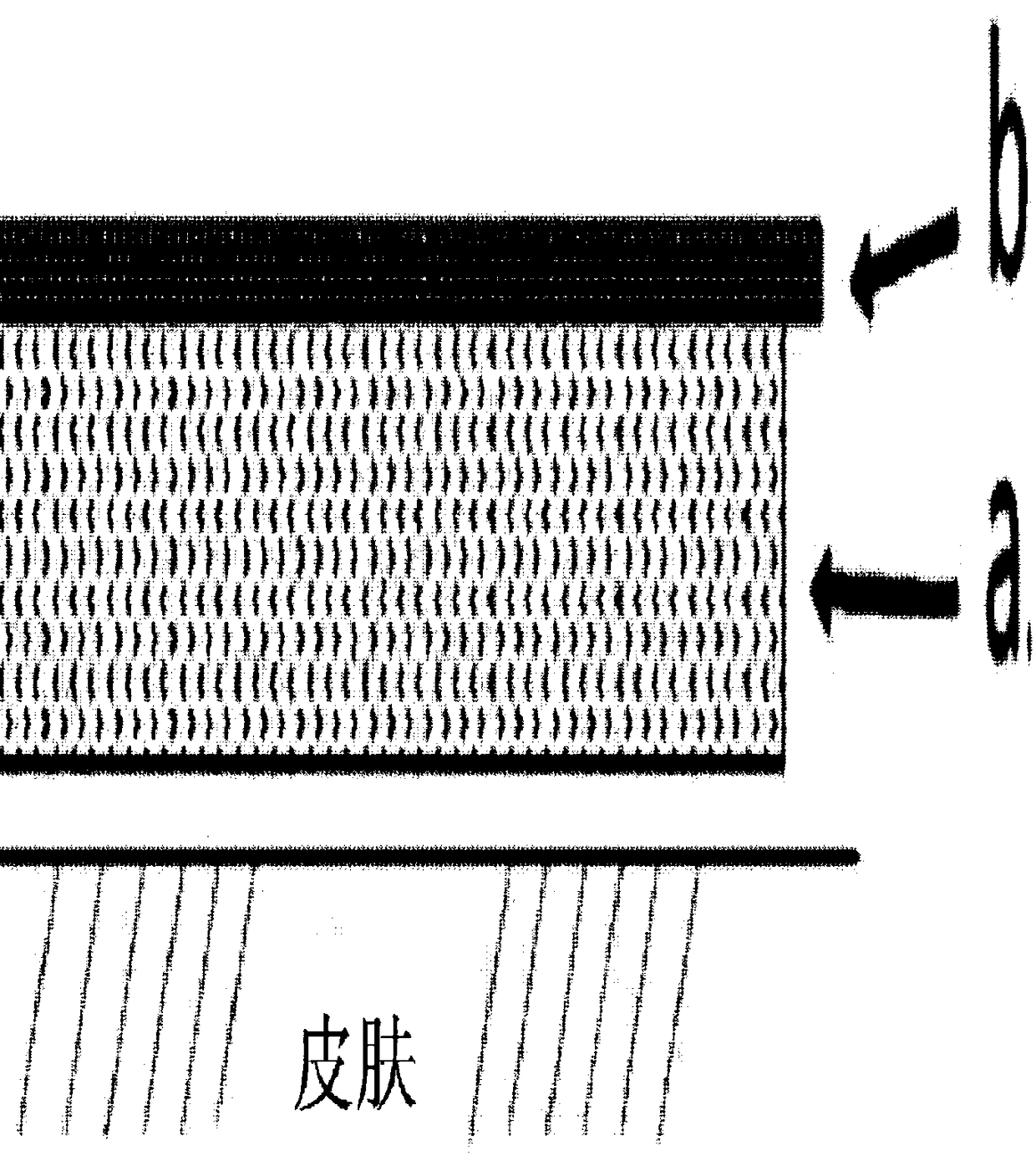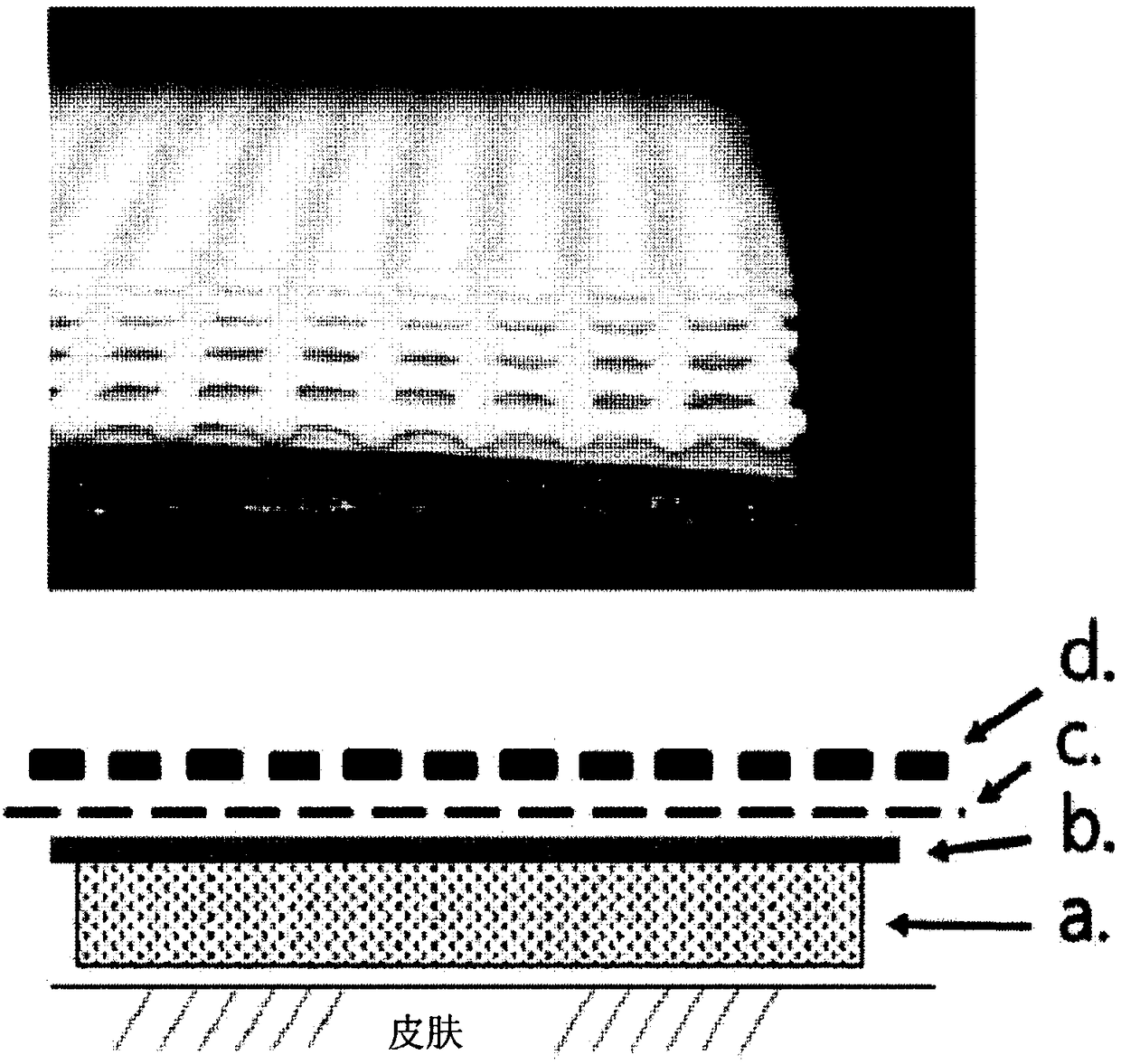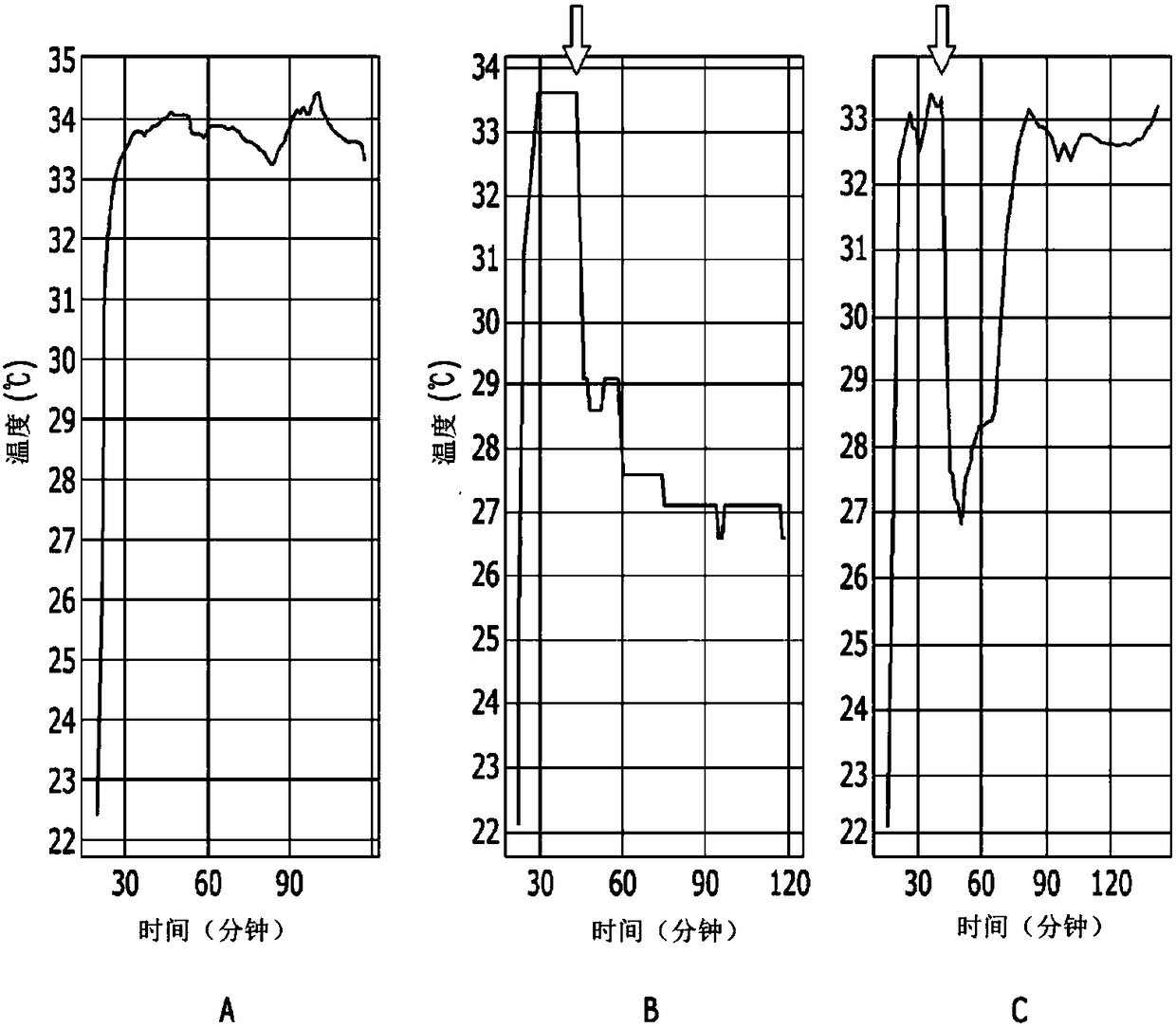Pad for alleviating and treating plasma protein exudation skin diseases including atopic diseases
A technique for skin diseases, pads, applied in the field of pads
- Summary
- Abstract
- Description
- Claims
- Application Information
AI Technical Summary
Problems solved by technology
Method used
Image
Examples
Embodiment 1
[0075] Embodiment 1: the preparation of liner of the present invention
[0076] As the liner of the present invention, agar is put into 50% NaCl solution (about 70mM) of saline, and carries out autoclaving (autoclave (autoclave), 121 ℃, 15lb / cm 2 , 15 minutes), when the solution was cooled to 60-70° C., it was poured into a frame to form a thickness of 2 mm. Before the agar solution is solidified, while remaining liquid (about 55-70° C.), fibers (paper, thin cotton, fibers, etc.) are placed on the surface, thereby solidifying to be integrated with the agar gel. After the agar gel has completely hardened, the occasionally protruding and hardened agar film above the fibrous layer is cleanly removed by scraping with a sharp tool.
[0077] In addition to the basic liner of the present invention, when preparing a liner containing the composition described in Table 1, before the agar gel hardens, when the gel is liquid (55-70°C), add the Components (for example, organic acid and...
experiment example 1
[0078] Experimental example 1: Measurement of skin temperature and skin cooling effect of liner
[0079] The temperature change of the epidermis was monitored using a wireless temperature sensing sensor (SL52T data logger, Signatrol, UK, UK). In order to confirm the effect of the liner on lowering the skin temperature, after placing the temperature sensor on the inner skin of the normal arm, it is covered with two layers of gauze and after placing the temperature sensor on the skin, place the liner (6×8cm, 2mm Thickness, 50% NaCl concentration of physiological saline), temperature changes were measured respectively. In addition, in order to confirm the continuous skin cooling effect of the pad, the temperature change was compared using a nonwoven fabric for a mask (6×8 cm) soaked in a saline concentration solution of 50% physiological saline. The experiment was carried out at room temperature. The average indoor temperature at the time of the experiment was 25±1° C., and th...
experiment example 2
[0085] Experimental Example 2: Duration of Lowering Skin Temperature of the Pad of the Invention
[0086] A gasket with a thickness of 2mm is attached to a heater (heating block) set at 32°C (plate (11.3×6.6cm) to be manufactured, a constant temperature metal bath (Dry Bath), Thermo Fisher Technology (ThermoScientific TM ), USA), and the amount of evaporated moisture was calculated by measuring the weight of the pad at regular intervals. The gel prepared as a pad contains 50% NaCl concentration of physiological saline, and based on this, 50% of the moisture of the pad is evaporated, and the time point at which the concentration of physiological saline becomes high is set as the epidermal application time. As a result of the measurement, the pot life of the measured pad was about 4 hours and 30 minutes. The amount of heat generated in the patient's affected part is slightly higher than that of normal skin, and thus the amount of moisture evaporation is expected to further i...
PUM
| Property | Measurement | Unit |
|---|---|---|
| thickness | aaaaa | aaaaa |
Abstract
Description
Claims
Application Information
 Login to view more
Login to view more - R&D Engineer
- R&D Manager
- IP Professional
- Industry Leading Data Capabilities
- Powerful AI technology
- Patent DNA Extraction
Browse by: Latest US Patents, China's latest patents, Technical Efficacy Thesaurus, Application Domain, Technology Topic.
© 2024 PatSnap. All rights reserved.Legal|Privacy policy|Modern Slavery Act Transparency Statement|Sitemap



